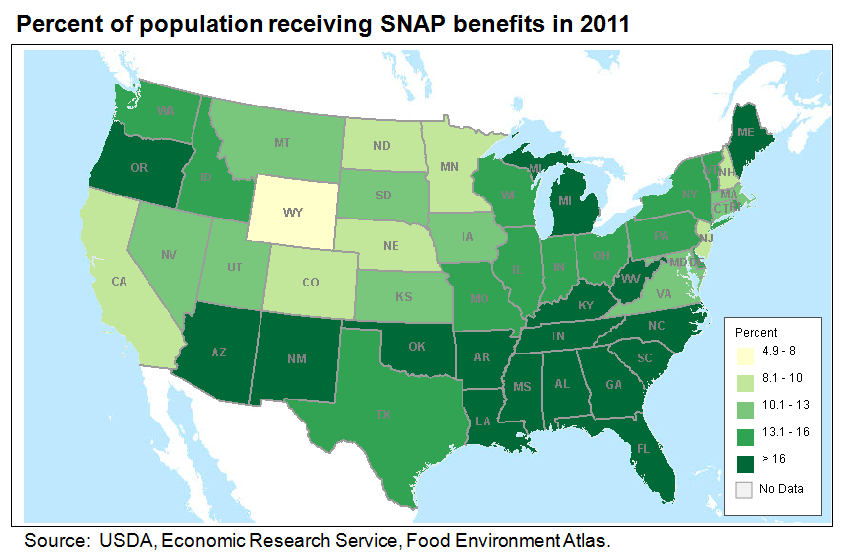Participation in USDA's Supplemental Nutrition Assistance Program varies by State
- by Economic Research Service
- 7/17/2012

The Supplemental Nutrition Assistance Program (SNAP) is the cornerstone of USDA's nutrition assistance programs. The program accounted for 73 percent of all Federal food and nutrition spending in fiscal 2011, serving an average of 44.7 million people per month, or about 14 percent of Americans. The percent of the population receiving SNAP benefits to purchase food varies across States reflecting differences in need, as well as differences in program policies. The Southeast stands out as a region where all States have a high percent of residents receiving SNAP benefits, with participation rates of 16 to 21 percent. In 2011, 6.4 percent of Wyoming's population received SNAP benefits-the only State with less than 8 percent of the population receiving SNAP benefits. In 2009, there were 12 States with less than 8 percent of their populations participating in SNAP. This chart is one of the new maps in ERS's Food Environment Atlas, updated on June 29, 2012.

